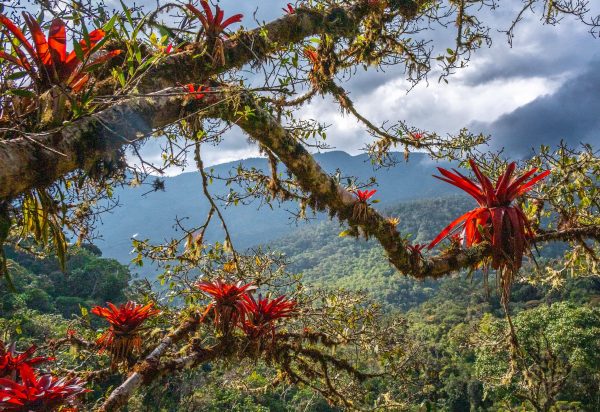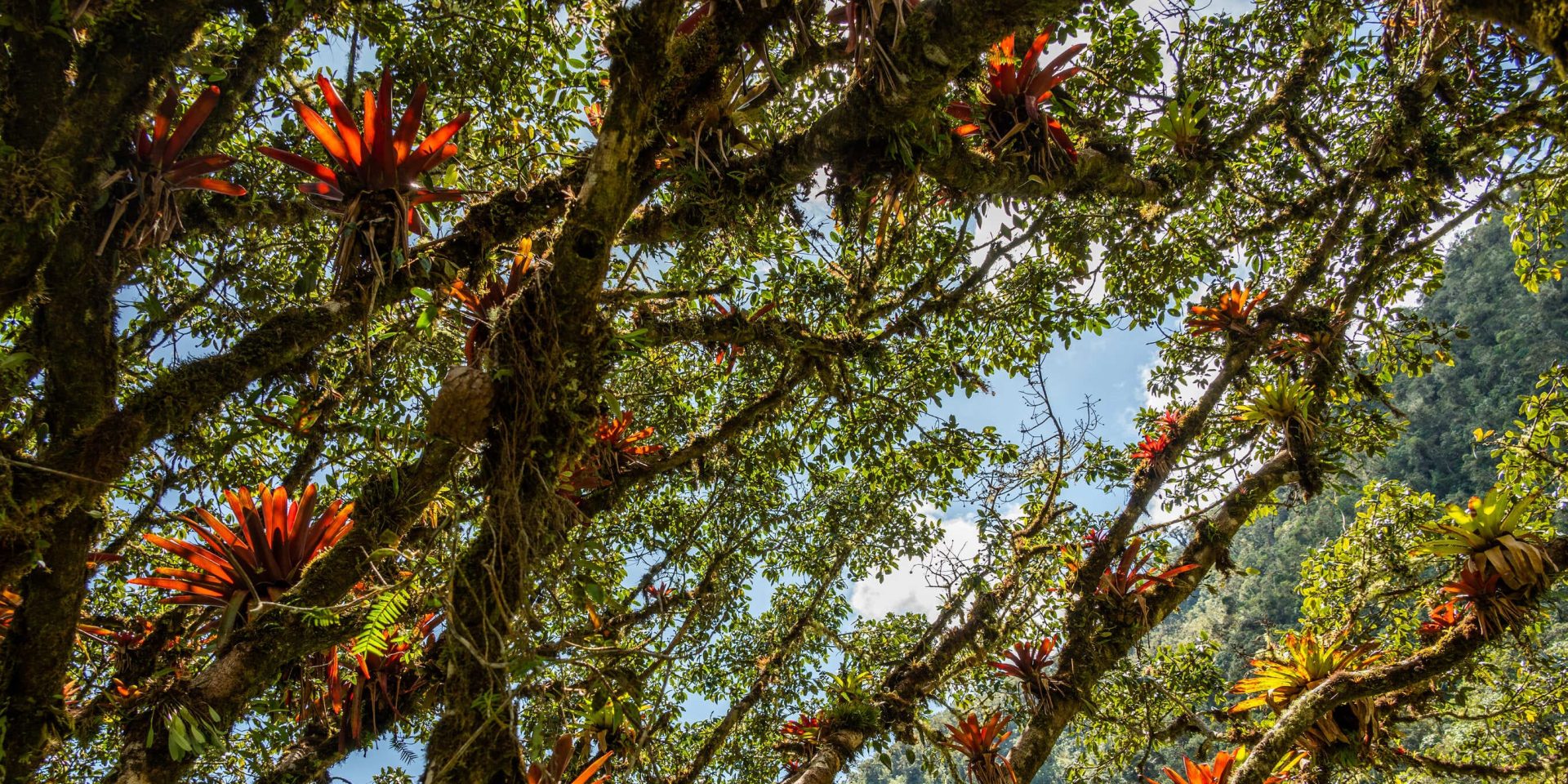Most epiphytic bromeliads retain water at the base of their leaves, forming a suspended mini-aquatic ecosystem. The plant draws its nutrients from these reservoirs at the base of each leaf, using its roots only to anchor itself to the supporting tree.
In each of these small water tanks, dead leaves that have fallen from the high branches of the support tree accumulate and decompose under the action of micro-organisms and small detritivorous invertebrates. These decomposers convert the leaves to the ultimate stage of mineral salts, which are then available to the plant itself. We can therefore speak of a true mutualistic association between the plant that provides an aquatic habitat for this microfauna and the microfauna that provides it in return with a rare nutrient, mineral nitrogen, so prized by the plant.






